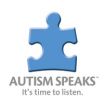(Press-News.org) SALT LAKE CITY -- Mutations in a gene called XRCC2 cause increased breast cancer risk, according to a study published today in the American Journal of Human Genetics. The study looked at families that have a history of the disease but do not have mutations in the currently known breast cancer susceptibility genes.
Sean Tavtigian, Ph.D., a Huntsman Cancer Institute (HCI) investigator and associate professor in the Department of Oncological Sciences at the University of Utah (U of U) is one of three co-principal investigators on the study, along with David Goldgar, Ph.D., professor in the Department of Dermatology at the U of U and an HCI investigator, and Melissa Southey, Ph.D., professor in the Department of Pathology at the University of Melbourne, Australia.
"We have added to the list of genes that harbour mutations causing breast cancer," said Tavtigian. "This knowledge will improve breast cancer diagnostics and add years to patients' lives. More important, relatives who have not been affected by the disease but carry the mutations will benefit even more. They can find out they are at risk before they have cancer and take action to reduce their risk or catch the cancer early."
XRCC2 may also provide a new target for chemotherapy. "A type of drug called a PARP inhibitor appears to kill tumor cells that have gene mutations in a particular DNA repair pathway. XRCC2 is in this pathway, as are BRCA1 and BRCA2. It's reasonably likely that a breast cancer patient who has a mutation in XRCC2 will respond well to treatment with PARP inhibitors," said Tavtigian.
According to Tavtigian, many breast cancer cases appear in families with a weak history of the disease. Only about 30 percent of the familial risk for breast cancer can be explained by a combination of mutations to and common sequence variation in the known breast cancer susceptibility genes. "So far most of the clinical diagnostic effort has been directed toward the very strong family history set of breast cancer cases and their close relatives," he said. "Our research looks at a population with a weaker family history, and as it turns out, a very rare gene mutation."
The researchers used a technology called exome capture massively parallel sequencing (exome sequencing), which shows the exact order of the nucleotides (the four building blocks of DNA) in all of the protein coding genes in the human genome. The ability of this technology to analyze the DNA of all of the genes in the genome in a single experiment, according to Tavtigian, makes it an amazingly powerful tool for genetic research. "We focused on the genes involved in a particular type of DNA repair, because most known breast cancer genes have been found there. That focused analysis allowed us to identify XRCC2 as a breast cancer susceptibility gene in individuals with a family history of breast cancer," says Tavtigian. "From the exome sequencing data, we found two different types of XRCC2 mutations that occur in breast cancer patients."
He explains that one type of mutation causes the gene to create an incomplete version of the protein. The resulting protein is usually dysfunctional. The other type occurs when a single amino acid in the protein is changed.
"It's a subtle change to the protein, but the resulting change in function could range anywhere from innocuous to even worse dysfunction than the incomplete protein causes," says Tavtigian. "Our sequence analyses suggest that we may have found the full spectrum of results in our study."
Further research is underway. "A worldwide effort has already been launched to figure out what fraction of breast cancer is due to mutations in this gene and how high the risk conferred by these mutations actually is," he says.
###The article lists 30 co-authors from HCI, the U of U, and other research organizations based in North America, Australia, and Europe. The study was supported by funding from the National Institutes of Health (R01CA155767 and R01CA121245) plus several other worldwide research foundations. The study also benefited from resources gathered by the Breast Cancer Family Registry, the Kathleen Cuningham Foundation Consortium for Research into Familial Breast Cancer, and several other breast cancer research efforts taking place around the world.
The mission of Huntsman Cancer Institute (HCI) at the University of Utah is to understand cancer from its beginnings, to use that knowledge in the creation and improvement of cancer treatments, to relieve the suffering of cancer patients, and to provide education about cancer risk, prevention, and care. HCI is a National Cancer Institute-Designated cancer center, which means that it meets the highest national standards for cancer care and research and receives support for its scientific endeavors. HCI is also a member of the National Comprehensive Cancer Network (NCCN), a not-for-profit alliance of the world's leading cancer centers that is dedicated to improving the quality and effectiveness of care provided to patients with cancer. For more information about HCI, please visit www.huntsmancancer.org.
A new breast cancer susceptibility gene
2012-04-02
ELSE PRESS RELEASES FROM THIS DATE:
Autism Speaks demands urgent response to the autism epidemic in new CDC prevalence estimates
2012-04-02
NEW YORK, N.Y. – Autism Speaks, the world's leading autism science and advocacy organization, today called on the nation's elected and appointed leaders to immediately develop a new, coordinated strategy to take on a national public health emergency – the autism epidemic – in the wake of a new report from the U.S. Centers for Disease Control (CDC) finding that autism is now diagnosed in a staggering 1 in every 88 American children.
Bob Wright, co-founder of Autism Speaks, said, "We have an epidemic on our hands. The costs are staggering and will continue to rise as prevalence ...
Designer Consignment Shop Appears on NBC 7 San Diego
2012-04-02
Authentic Luxury Goods (ALG), San Diego's designer consignment shop, has been featured in a recent special report by Consumer Bob on NBC 7 San Diego. Consumer Bob shows viewers "how they can make money selling their high-fashion accessories" by spotlighting the ALG boutique, which specializes in buying and selling lightly used designer handbags, shoes, jewelry, and watches.
Authentic Luxury Goods was founded last year by Joy Blackburn, who saw that San Diego women were longing for a special kind of consignment store, one that would deal exclusively in upscale ...
Breast cancer risk gene discovery fast tracked by new technology
2012-04-02
An international team of researchers led by the University of Melbourne has used new technology to fast track the discovery of a breast cancer risk gene and could assist in the discovery of other cancer genes.
Professor Melissa Southey of the Genetic Epidemiology Laboratory, Department of Pathology at the University of Melbourne, who led the study, said it was a significant discovery and the first breast cancer risk gene to be discovered using the latest genetic sequencing technology.
"The mutations in the newly identified gene XRCC2, although rare, explain another ...
Increasing water scarcity in California's Bay-Delta will necessitate trade-offs; 'hard decisions' needed to balance various environmental risks
2012-04-02
WASHINGTON — Simultaneously attaining a reliable water supply for California and protecting and rehabilitating its Bay-Delta ecosystem cannot be realized until better planning can identify how trade-offs between these two goals will be managed when water is limited, says a new report from the National Research Council. Recent efforts have been ineffective in meeting these goals because management is distributed among many agencies and organizations, which hinders development and implementation of an integrated, comprehensive plan. Additionally, it is impossible to restore ...
Patients with digestive disorders may receive high levels of X-ray radiation
2012-04-02
Patients with inflammatory bowel disease (IBD) and other gastrointestinal (GI) disorders may be exposed to significant doses of diagnostic radiation, according to a new study in Clinical Gastroenterology and Hepatology, the official journal of the American Gastroenterological Association.
"Our results show that significant increases in radiation exposure in the last decade have paralleled the increased use of computed tomography imaging," said Alan N. Desmond, MB, BMedSc, MRCPI, of the Cork University Hospital, Ireland, and lead author of this study. "While cumulative ...
Ultrafast laser pulses shed light on elusive superconducting mechanism: U of British Columbia
2012-04-02
An international team that includes University of British Columbia physicists has used ultra-fast laser pulses to identify the microscopic interactions that drive high-temperature superconductivity.
In the experiment, to be outlined this Friday in the journal Science, electrons in a prototypical copper-oxide superconductor were excited by extremely short 100-femtosecond (0.0000000000001-second) laser pulses.
As the material's electrons relax back to an equilibrium state, they release their excess energy via deformation of the superconductor's atomic lattice (phonons) ...
UC San Diego physicists find patterns in new state of matter
2012-04-02
Physicists at the University of California, San Diego have discovered patterns which underlie the properties of a new state of matter.
In a paper published in the March 29 issue of the journal Nature, the scientists describe the emergence of "spontaneous coherence," "spin textures" and "phase singularities" when excitons—the bound pairs of electrons and holes that determine the optical properties of semiconductors and enable them to function as novel optoelectronic devices—are cooled to near absolute zero. This cooling leads to the spontaneous production of a new coherent ...
MaxiAids Products for Independent Living Welcomes Barry Reiter as Director of Business Development
2012-04-02
MaxiAids Products for Independent Living (www.MaxiAids.com), a leading supplier of products for the blind, low vision, deaf, hard of hearing and those with special needs, today announced the addition of Barry Reiter as director of business development.
"We are happy to welcome Barry to the MaxiAids family," said Elliot Zaretsky, the company's president and founder. "His strong knowledge of the pharmaceutical industry is a perfect fit for our business and our goals."
Mr. Reiter spent a majority of his career as chief operating officer of a major ...
Mom was right: It's what you know, not who you know
2012-04-02
Conventional wisdom tells us that in the business world, "you are who you know" — your social background and professional networks outweigh talent when it comes to career success. But according to a Tel Aviv University researcher, making the right connection only gets your foot in the door. Your future success is entirely up to you, says Prof. Yoav Ganzach of TAU's Recanati School of Management.
When intelligence and socio-economic background (SEB) are pitted directly against one another, intelligence is a more accurate predictor of future career success, he asserts. ...
AGU journal highlights for March 29, 2012
2012-04-02
The following highlights summarize research papers that have been recently
published in Geophysical Research Letters (GRL), Journal of Geophysical
Research-Atmospheres (JGR-D), Journal of Geophysical Research-Planets (JGR-
E), and Journal of Geophysical Research-Biogeosciences (JGR-G).
In this release:
Regional models expect drier, stormier western United States
Declining sea ice to lead to cloudier Arctic
Improving plume forecasts using Fukushima data
How did the equatorial ridge on Saturn's moon Iapetus form?
Thermokarst lakes increased atmospheric methane ...


